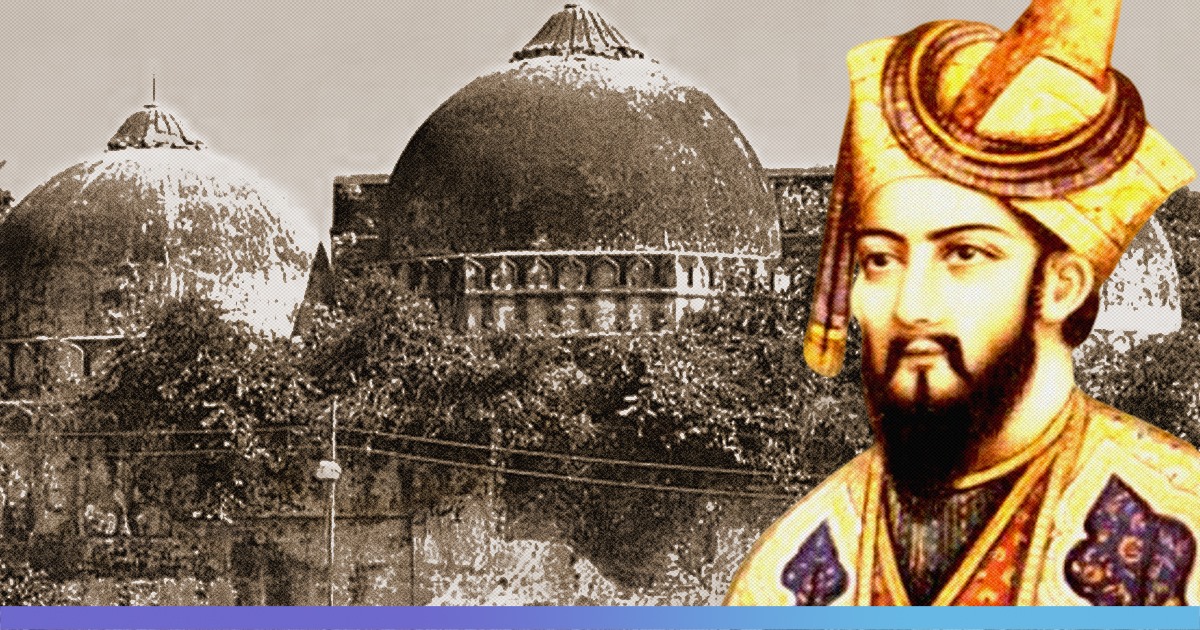It has been 28 years since the Babri Masjid in Ayodhya was demolished. ‘Mandir Wahi Banega’, the popular Hindutva-inspired cry, came into being after the infamous 1992 demolition of Babri Masjid by L K Advani-led VHP kar sevaks.
The 1992 demolition was judged ‘illegal’ by the Supreme Court bench as CJI Ranjan Gogoi read out the verdict to the nation, but supporters of the ‘illegal’ destruction of the sixteenth-century monument are celebrating today with the same cry that was shouted as its walls were fallen.
The Babri Masjid-Ram Mandir dispute ended last year after the five-judge Supreme Court bench ruled in favour of the Ram Mandir. The dispute had become a metaphor for one’s patriotic inclinations but how much did the disputed land matter to the Indians? The Logical Indian explains.
A Buried History
Until the early nineteenth century, the idea of Babri Masjid being built on a demolished temple was unknown to people. The narrative was allegedly fuelled by the ‘Bairangs’ at the behest of a British ploy to conquer.
What was not, became a bone of contention between two sensitively co-existing communities in Ayodhya: Hindus and Muslims, since 1853, when British officials recorded the first incident of communal violence in the region.
Etched in our memories as an important issue, symbolic of opposing but strongly-held personal dogmas which can be placed in a wide spectrum of beliefs and principles, the Babri Masjid-Ram Mandir dispute has been an extremely significant and relevant thread sewing together the history of medieval and modern India – as it is being written.
The Babri Masjid was a mosque in Ayodhya, Uttar Pradesh, built-in (approximately) 1528–29 CE by Mir Baqi, on orders of the Mughal emperor Babur. The exact date of the mosque’s construction has not been figured yet.
The mosque was located on a hill known as Ramkot and a section of the Hindu community in Ayodhya have been claiming that the Mughals destroyed a temple-like structure that marked the birthplace of Lord Ram to build the mosque.
Believed to be mythical, this ‘Ram Janmabhoomi’ narrative is commonplace in majoritarian households. It has often been disputed and called out for its dubious nature by experts and historians, but the British can be credited for being its original fabricators.
A Pre Independence Timeline
In 1856 the British annexed the independent Kingdom of Awadh, which was an empire carved out of the mighty Mughal nation. Wajid Ali Shah, the last Nawab of Awadh, had his kingdom gobbled up by the then Governor-General of the East India Company, Lord Dalhousie, on the grounds of ‘internal misrule’.
The British were emboldened by their growing influence in the subcontinent after Bengal’s complete annexation. They brought Awadh under the fold of their colonial enterprise as it controlled the fertile plain between the Ganga and Yamuna rivers – a cash cow of large and unprecedented potential for the avaricious colonisers.
The hill on which the remnants of the Babri Masjid stand today was a part and parcel of the region governed by Wajid Shah Ali and isn’t too far from Hanuman Garhi, which is a temple built on land donated by the Nawabs that has seen its own set of communal bickering.
Hanuman Garhi, believed to be Lord Hanuman’s residence at one time, was managed by a group called ‘Bairagis’, who on being shown that the Babri Masjid was registered under different names in the British’s revenue records, floated the ‘Ram Janmabhoomi’ narrative that enjoyed overwhelming traction.
These varied names were intentionally forged into the records for creating speculation over the namesake. Jama Masjid, Sita Rasoi and Janamsthan Masjid were the titles under which the Babri Masjid’s registration in British revenue records was done.
Just as communal tensions over the masjid began to slowly brew, the British had to ironically face a displeasing episode of communal unity when the Sepoy Rebellion of 1857 took place in Meerut – 10 hours away from Ayodhya. This was a major setback to their ‘divide and rule’ policy that was being carefully meted out across the country to lay the foundation of their colony.
Hence in 1858, a year after the Sepoy Rebellion, giving the two communities the hair of the dog, the British allowed for the construction of a Ram ‘chabootra’. The Muslim worshippers and visitors of the mosque filed several petitions in the Faizabad court, in the years that followed, for the removal of the chabootra as it interfered with the ‘proper’ practice of their faith. But British authorities ignored the pleas in an obvious attempt to appease the Hindu community.
In 1885, Mahant Raghubar Das filed a petition in the court of Hari Kishan in Faizabad, requesting that he be allowed to build a temple over chabootra but Judge Hari Kishan dismissed his request.
The entire matter stayed quiet for a fairly long time until 1934 when violence erupted triggered by news of cow slaughter during Eid, in Shahjahanpur – close to Ayodhya. The Babri Masjid was vandalised as a result of the riots that ensued but it subsequently repaired by a contractor.
In 1944, three years before Independence, the Commissioner of Waqfs declared the land to be Sunnis’ property as Babar was a Sunni Muslim, despite that fact that the last rulers of the province, Nawabs of Awadh, were a Persian Shia Muslim dynasty from Nishapur in Iran.
And since Independence, very polarising events have manifested on the land of Ayodhya driving a wedge between the Hindus and Muslims of the country. Riots and violence has been perpetrated in the name of religion – which was a part of the ‘divide and rule’ plan in 1856 for cementing British Raj in Awadh.
However, it is painstaking to see the spillover of colonialist communalism, that has claimed lives and disrupted life for so many, in the India of modern times.
Also Read: Ayodhya Final Verdict, Supreme Court Awards Disputed Land To Ram Janmabhoomi Nyas











